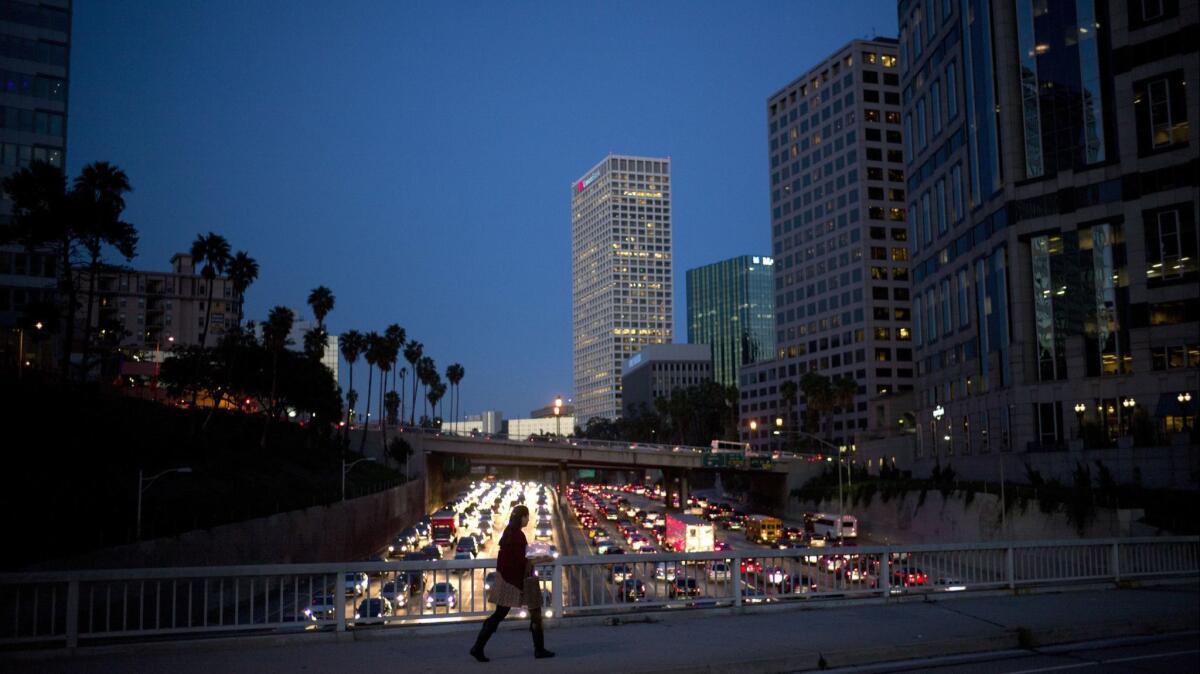Time to get going to beat Labor Day traffic as you hit the road for the three-day weekend

- Share via
If you’re reading this and planning to take a driving trip this Labor Day weekend, get going.
The slowest traffic will be between noon and 1 p.m., according to Drivemode Research Lab, when you’ll spend almost five minutes going one mile.
But that doesn’t mean the rest of the day will be a picnic, according to Hum by Verizon: Waiting until after the traditional 5 p.m. rush hour will get you snarled until at least 9 p.m.
No matter when you leave, if you’re reading this while you’re driving, please stop. Distracted driving is dangerous and contributes to what one insurance executive calls an “epidemic.”
Memorial Day and Fourth of July saw record numbers of road trippers, but Labor Day sometimes lags because, in many places, school has reconvened.
Another deterrent: increased cost of gasoline, about 56 cents a gallon more than last year in California.
And perhaps the most important thing to know as you get ready to leave or come here: Los Angeles has some of the worst drivers in the nation, according to a recent study by Allstate. It ranked 194 on a list of 200.
That’s important for a holiday weekend, said Ken Rosen, executive vice president and chief claims officer at Allstate .
There’s traffic congestion, of course, but “on a holiday weekend, everybody is more excitable than usual.” It’s not just your driving that could be an issue; it’s everybody who’s traveling with you.
In calling distracted driving an “epidemic,” Rosen urged drivers to put away their devices while they’re on the road.
One day, technology may help solve some of this — voice commands that change your radio station instead of having to physically touch the device, for instance — but it also may exacerbate the issue because, in many newer cars, there’s “a 5-inch monitor in the dash that people are drawn to.”
For now, travelers in California — the second most expensive gasoline market in the country after Hawaii, AAA reports — will pay more for their fuel. They have company on the Left Coast: Washington state travelers will pay $3.37 a gallon and Oregon drivers $3.25 a gallon. Want to pay less in the West? Try Arizona where you’ll pay $2.86 a gallon.
Even with a 56-cent increase from last year, a trip of 600 miles in a car that gets 35 mpg will cost you less than $10 more than last year — and will cost you even less if you’re going to Arizona, where your refill will bring your costs down ever further.
More to Read
Sign up for The Wild
We’ll help you find the best places to hike, bike and run, as well as the perfect silent spots for meditation and yoga.
You may occasionally receive promotional content from the Los Angeles Times.







